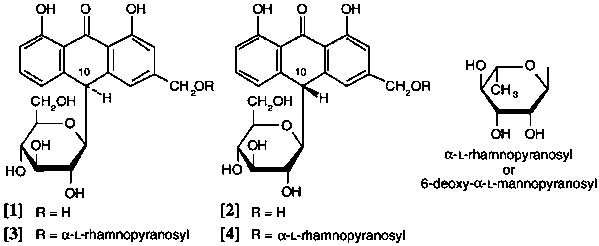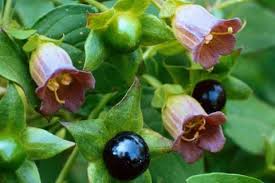Author:
Dr Vijayendra V Itagi
B.Sc., M.D (HOM),M.S(C&P)
Prof & HOD, Department of Materia Medica
Yenepoya Homoeopathic Medical College & Hospital
Mangalore, Karnataka, India
Introduction:
Based on ethnopharmocological activity and symptom similarity proved on healthy human beings. It’s a collective compilation from all sources which makes to understand completely starting from medicinal values of each family, differentiating factors of same group with different species, its morphology, active constituent and their individual character based on drug affinity & its sphere of action.
Liliaceae:
The Liliaceae or lily family is composed of large number of plant with medicinal virtues. Most of these are herbs and rarely shrubs.
Order– Liliaceae
Family-Liliaceae,
(Agavaceae, Amaryllidaceae, Hypoxidaceae, Dioscoreaceae, Iridaceae)
A widely distributed family of about 250 genera 3700 species mostly perinian herbs with a rhizome or bulb. Allium (450spp) Aloe 330spp) Colchicum (65spp)
The family cultivated for their flowers: vegetables-Asparagus and Onion, garlic etc.
Drugs include Squill, Sarsaparilla, Veratrum, Colchicum, Aloes and Cevadilla seed, Garlic(Allium sativum) frequently for the treatment of Colds, Bronchitis etc. has recently received much attention as a preventive of heart disease, as an antibiotic and as an anticancer drug.
Many members of the family contain alkaloids, which are Steroidal, Isoquinoline or Purine types. Other steroidal substances include Sterol, Cardenolides, Bufadienolides and Steroidal Saponins. The amino acids azetidine-2-carboxylic acid occurs in many genera and is also found in the Agvaceae. Other constituents include quinines (benzoquinones , naphtoquinones,,anthroquinnes, and anthrones): flavonoids (anthrocyanins and flavonols): the γ-pyrone chelidonic acid;cyanogenetic substances; and fructosan-type carbohydrates. Some volatile oil of the family has antimicrobial properties.
One such example from this family which is extensively used in Homoeopathic Practice –Aloe Socotrina
Aloe is a genus containing over 500 species of flowering succulent plants. The most widely known species is Aloe vera, or “true aloe”, so called because, though probably extinct in the wild, it is cultivated as the standard source of so-called “aloe vera” for assorted pharmaceutical purposes. Other species, such as Aloe ferox, also are cultivated or harvested from the wild for similar applications.
The genus is native to Africa; species are found in southern Africa, the mountains of tropical Africa, various islands off the coast of Africa including Sardinia, Madagascar, and the Arabian Peninsula.
Most Aloe species have a rosette of large, thick, fleshy leaves. Aloe flowers are tubular, frequently yellow, orange, pink, or red, and are borne, densely clustered and pendant, at the apex of simple or branched, leafless stems. Many species of Aloe appear to be stemless, with the rosette growing directly at ground level; other varieties may have a branched or unbranched stem from which the fleshy leaves spring. They vary in color from grey to bright-green and are sometimes striped or mottled. Some aloes native to South Africa is tree-like (arborescent)
Major chemical constituents
Aloe contains as its major and active principles hydroxyanthrone derivatives, mainly of the aloe-emodin-anthrone 10-C-glucoside type. The major constituent is known as barbaloin (aloin) –40%) . It also contains hydroxyaloin (about 3%). Barbaloin (=aloin) is in fact a mixture of aloin A (10S) [1] and B (10R) [2]. A. ferox also contains aloinoside A [3] and B [4]. Aloin A and B interconvert through the anthranol form as do aloinoside A and B.

Active Constituent
1. Aloin-A
2. Aloin-B
3. Aloe resins
Acts as Anthroquinolins
Chemical properties
According to W. A. Shenstone, two classes of aloins are recognized:
(1) Nataloins, which yield picric and oxalic acids with nitric acid, and do not give a red coloration with nitric acid.
(2) Barbaloins, which yield aloetic acid (C7H2N3O5), chrysammic acid (C7H2N2O6), picric and oxalic acids with nitric acid, being reddened by the acid.
This second group may be divided into a-barbaloins, obtained from Barbados Aloe, and reddened in the cold, and b-barbaloins, obtained from Socotrine and Zanzibar Aloe, reddened by ordinary nitric acid only when warmed or by fuming acid in the cold. Nataloin (2C17H13O7·H2O) forms bright-yellow scales, barbaloin (C17H18O7) prismatic crystals. Aloe species also contain a trace of volatile oil, to which their odour is due.
1. Aloin-A: Increases peristaltic contractions in colon induce bowel movements.
2. Aloin-B: Prevents reabsorbing water from GIT leads to softer stool.
3. Aloeresins: Causes uterine contraction hence it is contraindicated in pregnant lady.
(Anthroquinones –Phenolic groups with laxative properties, used as colouring agent, flavoring aromatizes, antioxidant.)
Note: Based of chemical properties of phenolic groups and therapeutic utility according to Homoeopathic Materia Medica found to be same.
Experimental pharmacology
Aloe’s mechanism of action is twofold. It stimulates colonic motility, augmenting propulsion and accelerating colonic transit, which reduces fluid absorption from the fecal mass. It also increases paracellular permeability across the colonic mucosa probably owing to an inhibition of Na+, K+-adenosine triphosphatase or to an inhibition of chloride channels. This results in an increase in the water content in the large intestine.
Clinical pharmacology
The laxative effects of Aloe are due primarily to the 1, 8-dihydroxyanthracene glycosides, Aloin A and B (formerly designated Barbaloin) After oral administration Aloin A and B, which are not absorbed in the upper intestine, are hydrolyzed in the colon by intestinal bacteria and then reduced to the active metabolites (the main active metabolite is aloe-emodin-9-anthrone).which like senna acts as a stimulant and irritant to the gastrointestinal tract .The laxative effect of Aloe is not generally observed before 6 hours after oral administration, and sometimes not until 24 or more hours after.
Therapeutic utility:
Frequently used in the treatment of diarrhea, dysentery & piles. It is also valuable remedy in uterine hemorrhage and prolapsus of the uterus, stool, rectum, and anus.
Modalities of Remedy
| Modalities | Aloe Socotrina |
| Worse by | In the morning |
| Summer, heat. in hot, after drinking or eating | |
| Better by | From cold ,open air |
| Family | Liliacae |
| Order |
Drug Relations:
| Drug Relation | Aloe Socotrina |
| Inimical | All Sativa |
| Antidotes | Camphor, lycopodium Nux Vomica,Sulphur |
| Complimentary | Sulph |
It resembles sulphur in many of its symptoms, but is not as deeply acting as that. Aloe is, however, “of equal importance with Sul.in chronic diseases with abdominal plethora.
Potency: 30, 200
Conclusion:
1.Based on the comparative study of Aloe Socotrina on the bases of taxonomic approach to the study of medicinal plants and therapeutic utility, major chemical constituents ,chemical properties, Clinical pharmacology & path gnomic and Pathogenicity of remedy while proving on healthy person found to be correct.
2. Due to the laxative properties, remedy found to be more useful in case of constipation, diarrhea, piles or hemorrhoids
3. Due to phenolic constituent-this remedy found more effective in all types of skin affection.
4. This comparative study based on chemical properties of each active constituents of particular remedy justifies significance of Homoeopathic treatment in all types of disorders, so called evidence based line of treatment.
5. Most useful for students to understand concept of each remedy by studying pathogenetic, path gnomic, chemical properties of each active constituents based on phytochemicals.
REFERENCES
- J H Clarke, 1993 Reprint Edition, Dictionary of Practical Materia Medica,
B. Jain Pulishers Pvt. Ltd.New Delhi.
- William Boericke,M.D.1990 Reprint Edition,Pocket Manual Of Homoeopathic Materia Medica & Repertory, B. Jain Pulishers Pvt. Ltd.New Delhi.
- H.Wagner, S.Bladt, Second Edition, Plant Drug Analysis, thin Layer Chromatography Atlas, Springer Publication.
- W.C.Evans,Trease and Evans Pharmognacy text book-
- www.Medicinal Properties.Com
- Google search
About the author:
Dr Vijayendra V Itagi, B.Sc, MD (Hom), M.S(C&P)
He has a clinical experience of 23yrs and teaching experience of 17 yrs. He has worked as Principal at Alva’s Homoeopathic Medical College, Moodbidri, Karnataka. He is now presently working at Yenepoya Homoeopathic Medical College & Hospital, Mangalore, Karnataka as Vice-Principal, Professor & HOD of Homoeopathic Materia Medica Department. He is a member of HMAI, LMHI-India, Life member of Red Cross Society, and Member of AYUSH-federation-India





